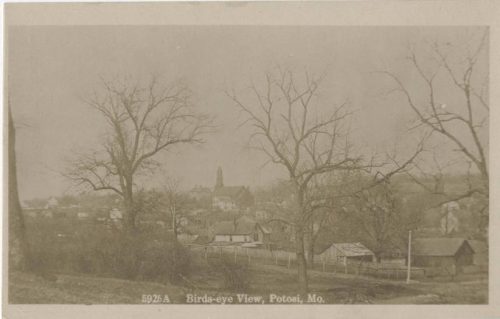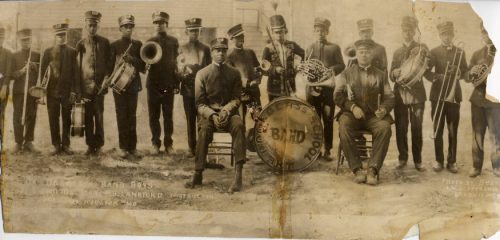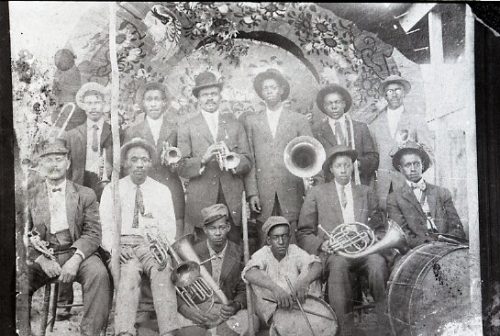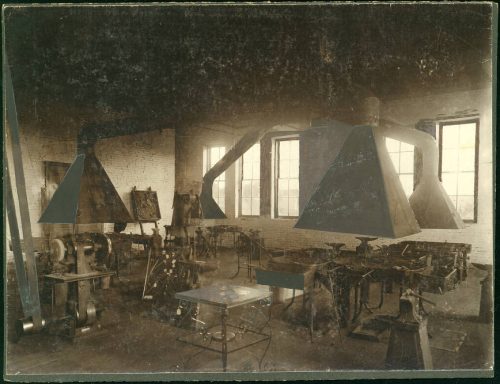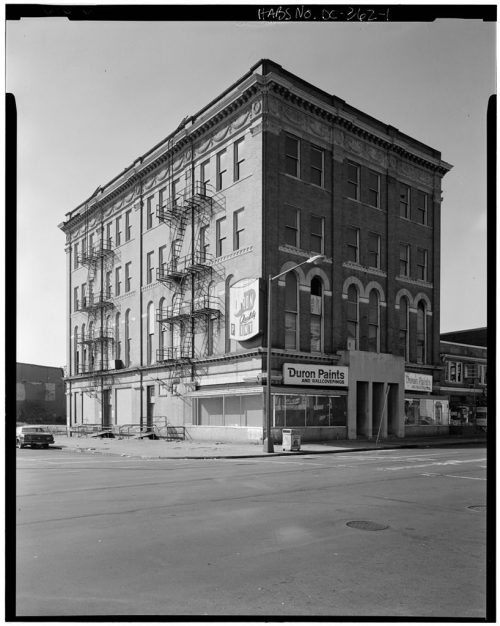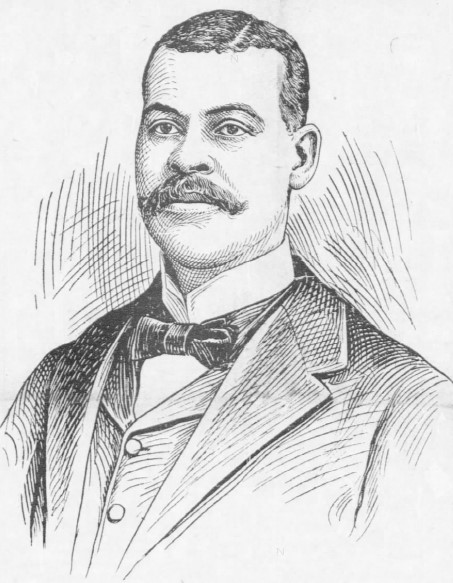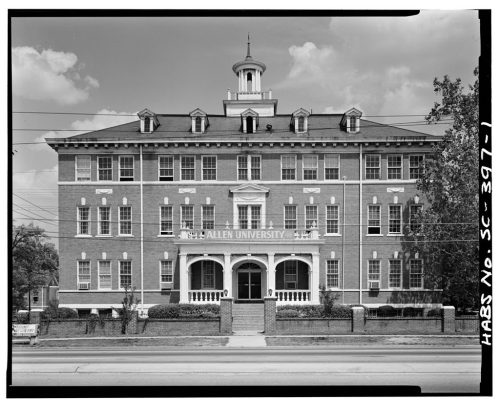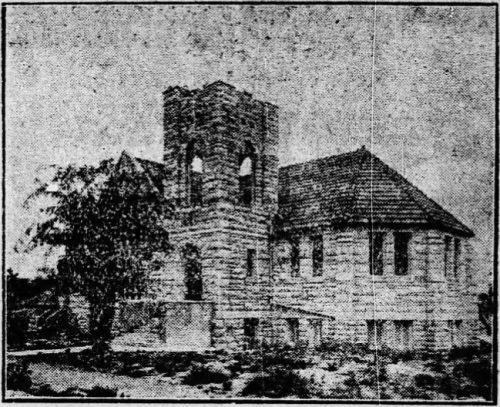![St. Louis Argus August 23 1935 John A. Lankford, ca. 1920s [St. Louis Argus, August 23, 1935, p. 1]](https://historicmissourians.shsmo.org/wp-content/uploads/2024/08/St.-Louis-Argus-August-23-1935.jpg)
John A. Lankford
Introduction
John A. Lankford was an architect from Potosi, Missouri. Through his education and experiences at some of the United States’ most prominent historically Black colleges and universities, Lankford was able to establish one of the top Black-owned architectural firms of the early twentieth century.
Early Years
John A. Lankford was born in Washington County, Missouri, on December 4, 1874. He was one of ten children born to Anderson Lankford and Nancy Bass. Both of his parents were born enslaved in Washington County and gained their freedom at the end of the Civil War. In the early years of John’s life, the Lankfords lived on a farm near Potosi, but by 1880 his father was working as a lead miner while his mother took care of the children and attended to the day-to-day matters of the home.
Education
Due to state laws restricting students of color to segregated schools, Lankford attended a school simply known as “Colored School” for his formal education in Washington County. When not in school, he worked as a farm laborer and in the nearby mines. Seeking higher educational opportunities, he enrolled at Lincoln Institute, which had been founded in Jefferson City by Black veterans of the Civil War and became the only public college or university in Missouri open to African Americans.
While at Lincoln, Lankford took courses in mechanical drawing, blacksmithing, carpentry, engineering, and machinery. He also worked as a janitor and as an agent for steam laundry and pants companies to earn enough money to pay his way through school. After completing his studies at Lincoln, Lankford took courses at Tuskegee Institute in Alabama and International Correspondence School in Pennsylvania. Between 1896 and 1902, he worked as a blacksmith in St. Louis and supervised engineering projects at cotton mills in Georgia and North Carolina. He also taught and earned degrees in science from Shaw University, Morris Brown College, and Wilberforce University.
Washington, DC
While teaching at Alabama Agricultural & Mechanical University, Lankford met Charlotte Josephine Upshaw, the granddaughter of Henry McNeal Turner, a prominent bishop in the African Methodist Episcopal Church. They married in 1901 and a daughter, Josephine, was born in 1903. Soon after their wedding, the Lankfords made their home in Washington, DC.
The Lankfords’ move to Washington coincided with John’s employment as the architect and supervisor for the United Order of True Reformer Building in the city. A sizable undertaking, the True Reformer Building became one of Lankford’s best-known designs and hosted many public events, including classes, concerts, and community meetings.
John A. Lankford & Brother
Not long after completing the True Reformer Building, John opened his own architectural firm in Washington. He was joined at the firm by his brother, Arthur Edward Lankford, who followed John’s educational path into the architecture industry. The firm was named John A. Lankford & Brother. By the end of the first decade of the twentieth century it had expanded to twelve branch offices in the United States and completed several building projects, particularly in Virginia and Maryland.
During this period of substantial growth, Lankford was also appointed supervising architect for the African Methodist Episcopal religious denomination. As a result, he drafted architectural designs for several A.M.E. churches in the United States and South Africa. Due to this expertise with churches, Lankford was selected to design several houses of worship in Missouri, including Leonard Avenue Baptist Church in St. Louis, Mt. Zion Baptist Church in Liberty, and First Presbyterian Church in his hometown of Potosi.
Continuing Education
Though he received much acclaim during his lifetime for his architectural career, Lankford was always passionate about education. He returned to higher education to teach at Wilberforce University in Ohio and Edward Waters College in Florida, and later earned a law degree from Frelinghuysen University in Washington, DC. He also wrote extensively on architecture, publishing a book titled Lankford’s Artistic Churches and Other Designs.
In the 1920s, he served as architect of the Chapelle Administration Building on the campus of Allen University, a historically Black college in South Carolina, that is now a National Historic Landmark. Additionally, after a fire destroyed the church of the Big Bethel A.M.E. congregation in Atlanta, Georgia, in 1923, Lankford designed a new building that later became a key house of worship during the Civil Rights movement. Big Bethel A.M.E. Church still stands today.
Legacy
Over the course of his life, John A. Lankford was one of the most well-known architects in the United States. Toward the end of his career, Lankford served as a consultant for the US Department of Interior and the US Navy. Additionally, he was a significant leader in the African American community, serving as vice president of the National Negro Business League and president of the National Technical Association. He was also the first African American architect licensed in Virginia and the District of Columbia. John A. Lankford died at his home in Washington, DC, on July 2, 1946. His funeral was held at Metropolitan A.M.E. Church, and he was buried at Lincoln Memorial Cemetery in Suitland, Maryland.
Text and research by Sean Rost
References and Resources
For more information about John A. Lankford’s life and career, see the following resources:
Society Resources
The following is a selected list of books, articles, and manuscripts about John A. Lankford in the research centers of The State Historical Society of Missouri. The Society’s call numbers follow the citations in brackets.
Articles from the Newspaper Collection
- “A Credit to His Race.” Potosi Journal. April 20, 1898. p. 4.
- “A Half Million Dollar Structure to take the place of Big Bethel A.M.E. burned at Atlanta.” St. Louis Argus. March 2, 1923. p. 7.
- “A Missouri Negro on Top.” St. Louis Palladium. August 31, 1907. p. 1.
- “A Missouri Negro on Top.” St. Louis Palladium. September 7, 1907. p. 4.
- “City Awaits Technicians.” St. Louis Argus. August 23, 1935. p. 1.
- “Famous Negro Architect Dies.” Potosi Independent-Journal. July 18, 1946. p. 1.
- “Heads Negro National Mechanics’ Exchange.” St. Louis Argus. September 5, 1924. p. 1.
- “New Presbyterian Church Dedicated.” Potosi Journal. October 20, 1909. p. 1.
- “Noted Architect and Mechanical Engineer.” St. Louis Argus. January 28, 1921. p. 1.
- “Noted Architect Receives Degree.” Kansas City Sun. June 22, 1918. p. 1.
- Showalter, George William. A Bicentennial Scrapbook: Commemorating the 200th Anniversary of Potosi at the Heart of the Historic Mining Country of Missouri. Potosi, MO: Independent-Journal, 1975 [REF H220.47 P849 1975]
- Washington County, Missouri: History and Families. Morley, MO: Acclaim Press, 2013. [REF F710 W276 2013]
- Potosi, Missouri Photograph Collection (R0234)
The Potosi, Missouri Photograph Collection contains 35mm black and white negative copies of photographs of prominent citizens, commercial buildings, and street scenes in Potosi, Washington County, Missouri.
Outside Resources
These links will take you outside the Society’s website. The Society is not responsible for the content of the following websites:
- American Institute of Architects
This website is hosted by the American Institute of Architects and features an article on John A. Lankford and other notable architects entitled, “The Trailblazers: Six Profiles.” - DC Historic Sites
This website is hosted by the DC Preservation League and features a biography as well as documents/images related to John A. Lankford. - Google Books
This website is hosted by Google Books and features excerpts from Dreck Spurlock Wilson’s “African American Architects: A Biographical Dictionary, 1865-1945.” - Public Welfare Foundation
This website is hosted by the Public Welfare Foundation and features a historical overview of the True Reformer Building in Washington, DC.

